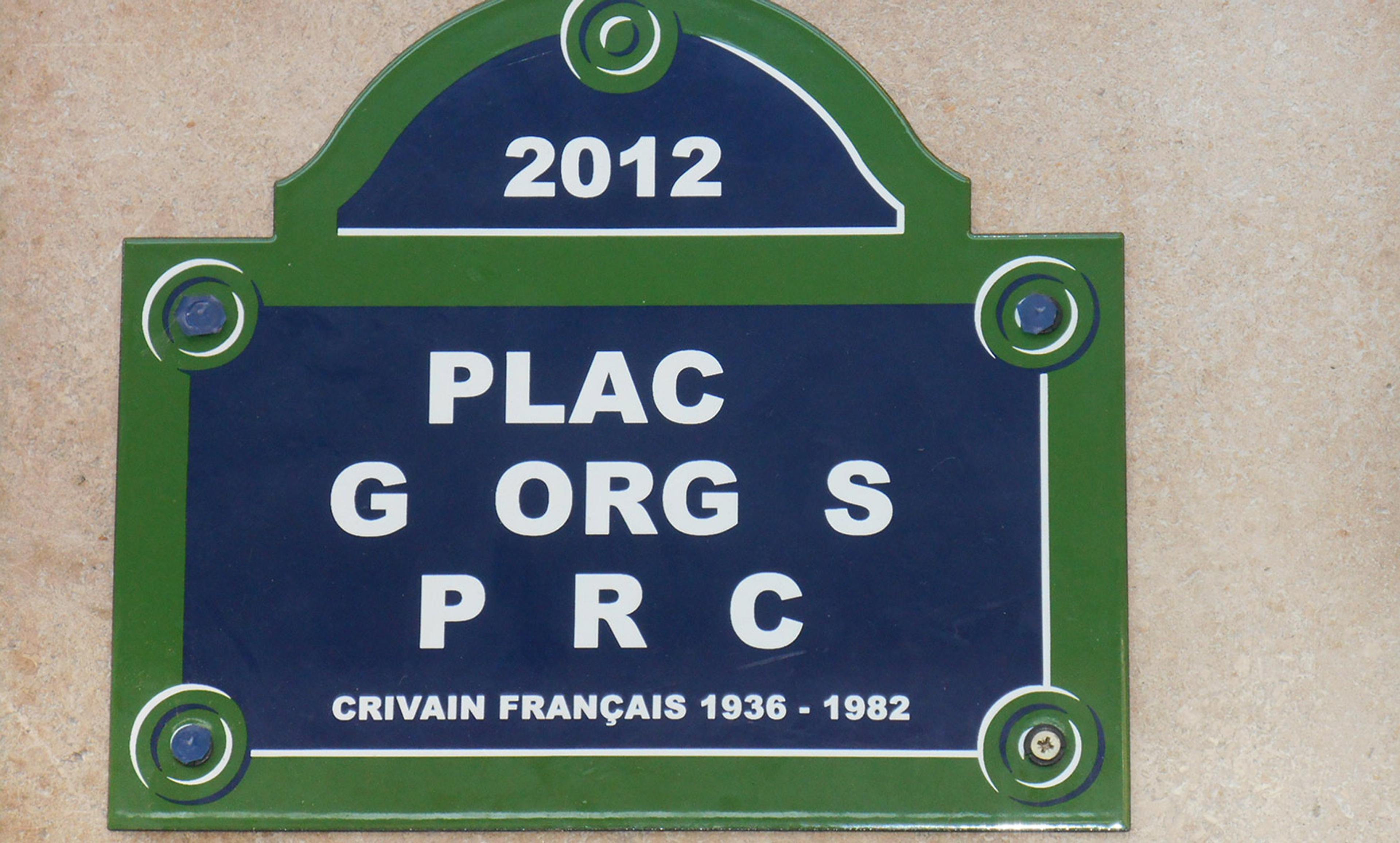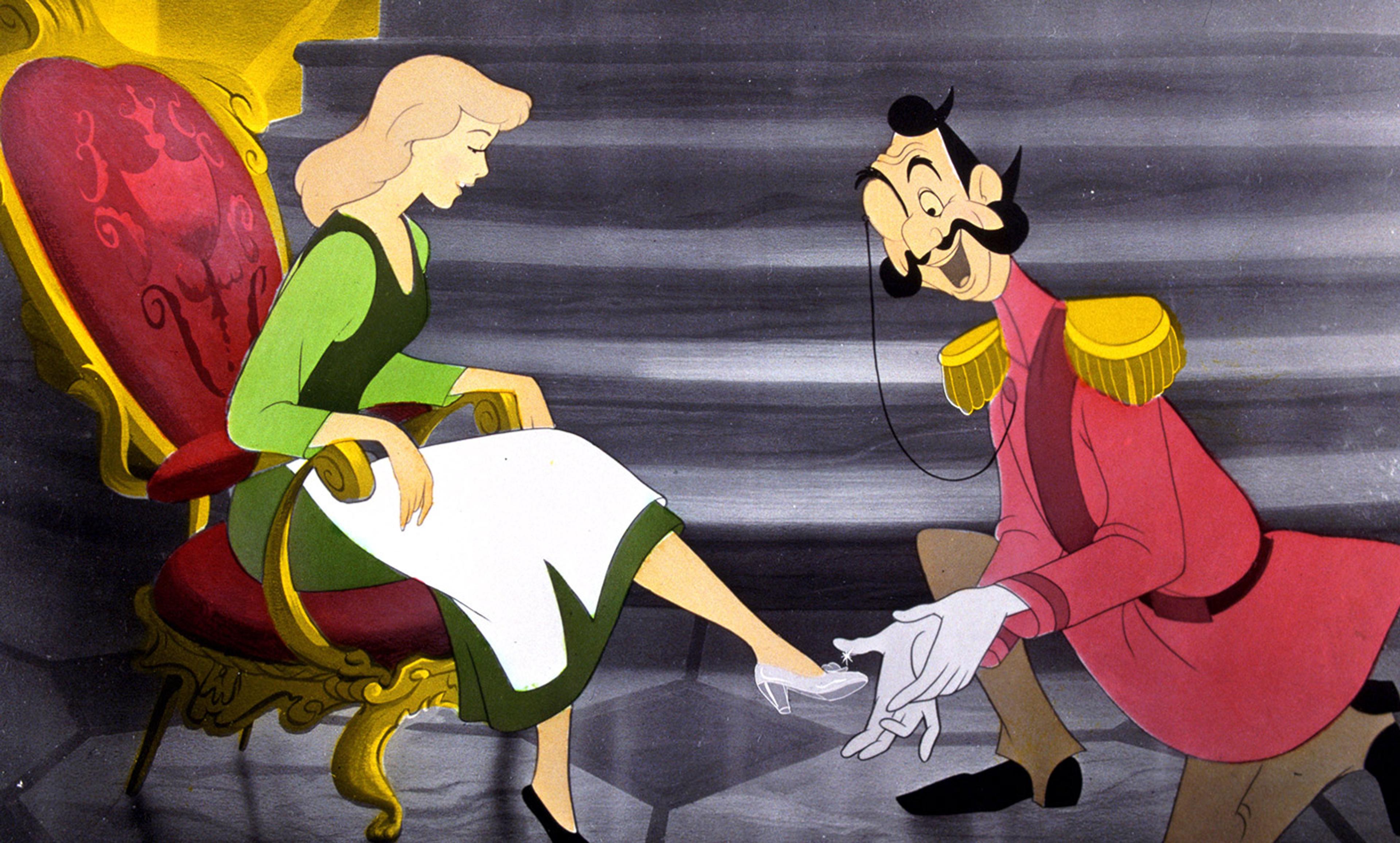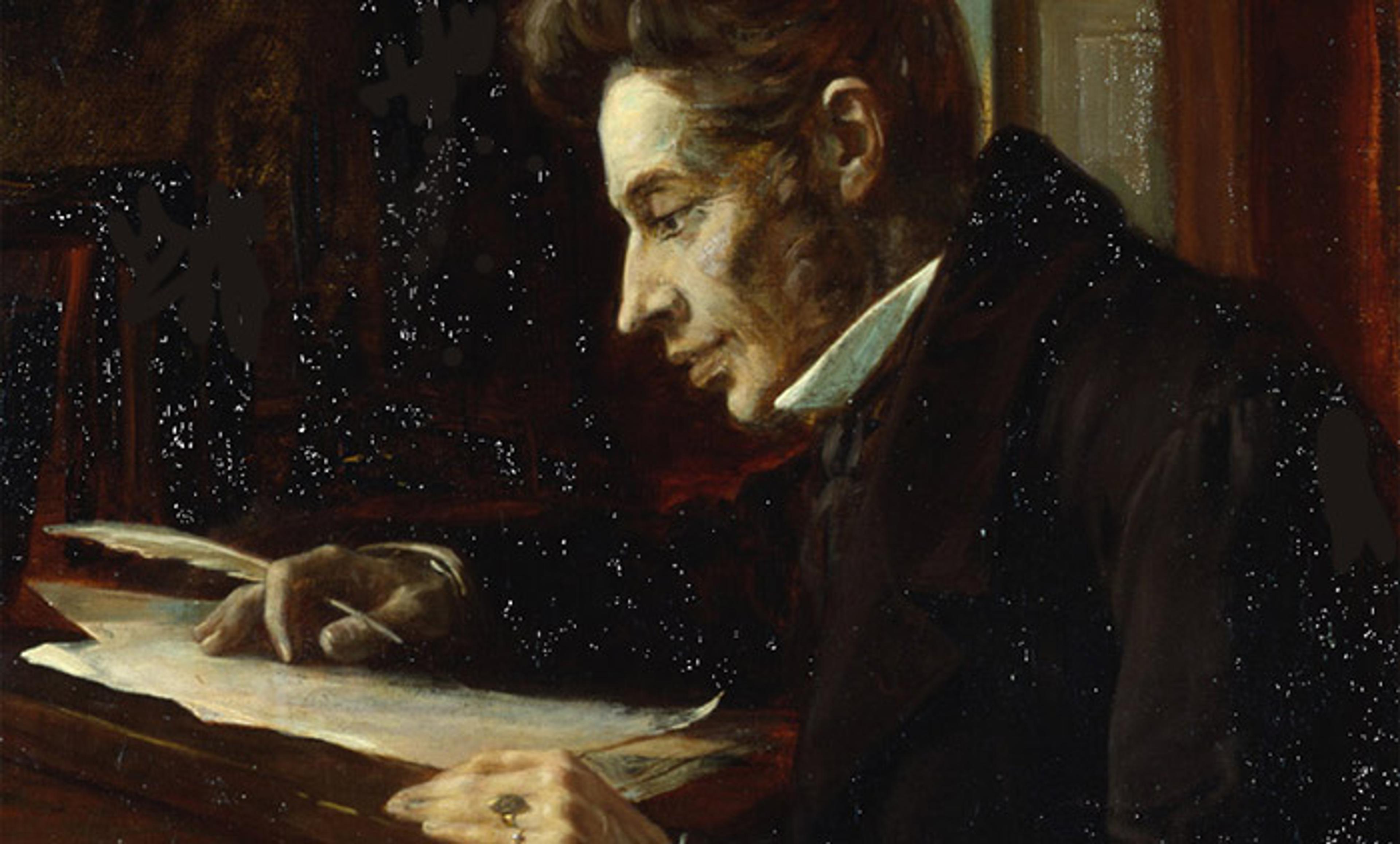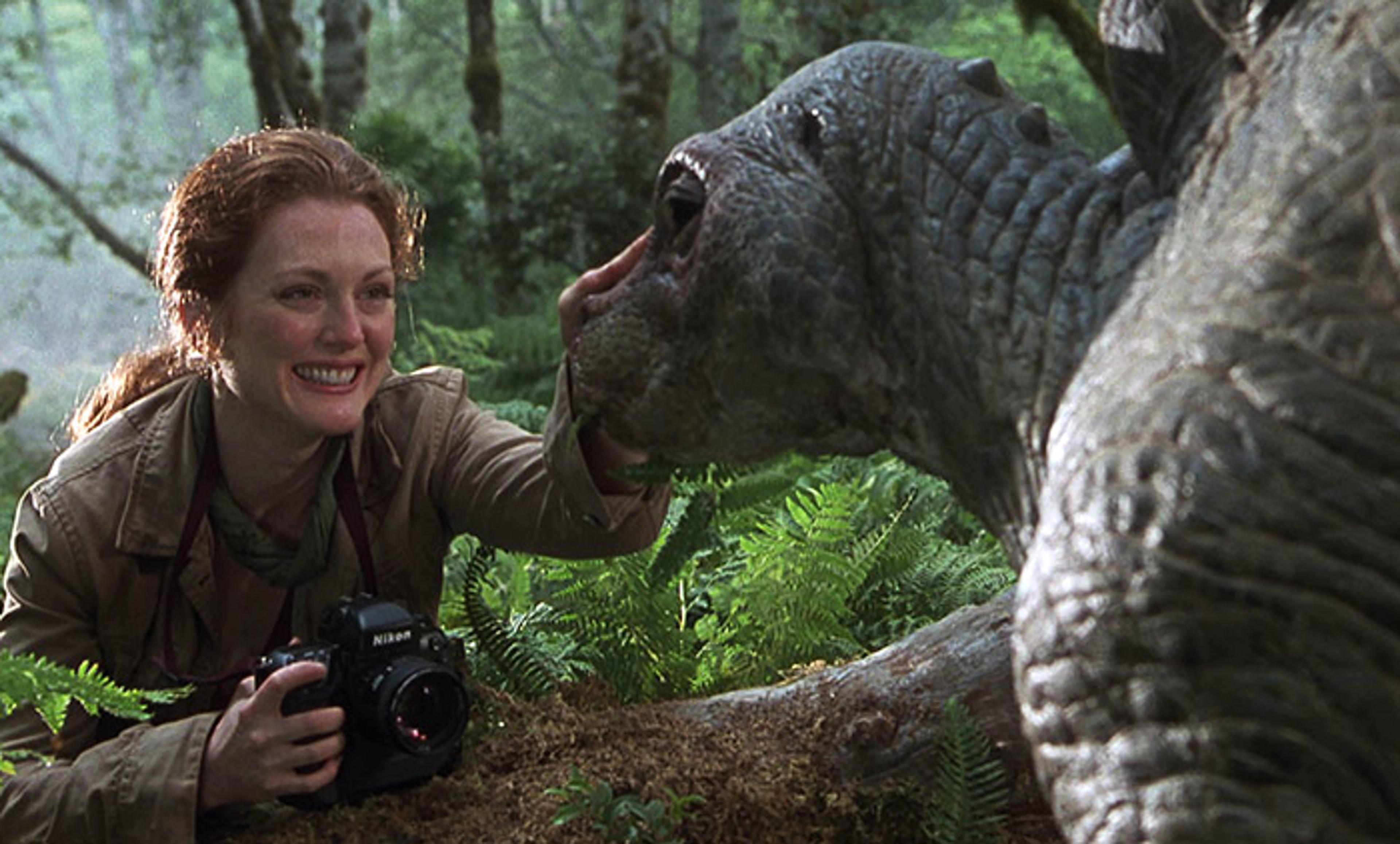French writer and Oulipo member Georges Perec once wrote a novel, A Void (1969), without using the letter ‘e’. Photo Wikipedia
There’s an exercise I sometimes get members of book groups to do: I ask each of them to draw a picture of the cabin from my first novel, Our Endless Numbered Days (2015). The building is carefully described in the book: one door, single storey, two windows, a stove with a chimney that pokes out through the shingled roof. But each drawing is different. Some have porches, others have back doors and many windows; sometimes even an upstairs. Each reader brings her own imagination, history and knowledge to the cabin she draws, just as each reader brings a different version of the novel to life as she reads it.
The German literary theorist Wolfgang Iser said that a literary work lies halfway between the text written by the author and the ‘realisation’ of that text by the reader, in the act of reading. In his essay ‘The Reading Process: A Phenomenological Approach’ (1972), Iser writes about the gaps in the text that the reader must fill in for himself:
[O]ne text is potentially capable of several different realisations, and no reading can ever exhaust the full potential, for each individual reader will fill in the gaps in his own way, thereby excluding the various other possibilities; as he reads, he will make his own decision as to how the gap is to be filled. In this very act the dynamics of reading are revealed.
Iser’s reader-response theory of literary criticism shifts the focus from the author’s intention, to include the reader’s response.
Iser’s theory suggests that the space left for the reader is unintentional, but in fact many writers have deliberately pushed the gap, forcing readers to consciously interact with the text, becoming more aware of themselves, and that they are creating something beyond what is on the page. In The Unfortunates (1969), B S Johnson leaves the reader free to choose the order in which she reads the 27 unbound sections; Johnson specifies only the first and last chapters. Georges Perec’s lipogrammatic novel La disparition (1969) – translated to English as A Void (1995) – is written without using the letter e: the reader is forced into a position of discomfort, becoming supremely aware of the jumps required in order to retain a sense of the narrative.
Perec was a member of Oulipo, a loose collective of French writers who practised constrained writing – a literary technique that imposes limitations or a particular pattern on a piece of work. As well as being often ludic – Green Eggs and Ham (1960) by Dr Seuss is a constrained story that uses no more than 50 words in its entirety – at its most successful, constrained writing forces the reader to address a range of fundamental issues, not least: what is a story? How much ‘work’ in understanding a text should a reader have to do when reading? And, what are a reader’s expectations before she reads a particular work?
Of course, the experimental literature of the 1960s, in which writers consciously call on their readers’ involvement, owes a debt to modernist writers such as James Joyce, Ezra Pound and Samuel Beckett, as well as earlier novels such as Tristram Shandy (1759-67) by Laurence Sterne, and indeed the debt goes right back to Ovid, who suggested that love letters could be written in milk. In this case, the reader would be forced to interact with the text, since the letters could be read only when coal dust was scattered across them.
In ‘Notes on Craft’ (2018), an impassioned manifesto on writing, built from magpie pickings of other writers’ statements and published in Granta magazine, the British author Jeremy Gavron says that as soon as he sees fragmentary text he is ‘intellectually and aesthetically and almost erotically alert’. Experimental work might jump, stop, start, run on or deliberately confuse. But is it possible to create the same effect – a forced engagement – in a ‘conventional’ novel? (One that tells a story with a beginning, middle and end, without any obvious constraints, except genre.) It’s challenging. The readers’ expectations are more firmly set when starting a conventional novel than with a piece of experimental fiction. They assume, for example, that all narrative strands will be tied up, any questions raised in the story will be answered, and narrative closure will be achieved. In her paper on narrative closure, published in Philosophical Studies in 2007, the philosopher and author Susan L Feagin writes that humans desire explanations even when artists try to circumnavigate them. If a reader’s uncertainty isn’t resolved, she might feel dissatisfaction or disappointment with the story.
Feagin might be right, but many contemporary ‘conventional’ novels do manage to involve and play with the reader in an engaging way. Ali Smith’s How to be Both (2014), with its dual, overlapping narratives, encourages a profound interaction on the part of the reader. Two versions of the novel were printed with the stories interchanged, so that one reader might read one of the stories first, and another might read the same story second. Which version of the book the reader buys is arbitrary, but the ordering of stories affects how she will read the text.
Other contemporary novels leave narrative strands dangling; and while they do clearly end, they refuse to provide full narrative closure, so allowing more room for Iser’s ‘realisation’ of the text in the reader’s mind. The ambiguous endings in Idaho (2017) by Emily Ruskovich, A Separation (2017) by Katie Kitamura and The Little Friend (2002) by Donna Tartt demand that the reader continues to consider the story and its characters even after the final scene is read and the book closed. No doubt many readers are frustrated by these novels and their non-endings, but it is also likely that the lack of full resolution has led many readers – myself included – to work that bit harder to find their own explanations – an engagement that brings its own rewards.
According to Gavron: ‘Omission is a form of creation. Limit, constraint and the compulsions of the unknown – the excluded – are the true foundation of narrative art. A place for the reader to enter more fully into the book.’ Gavron is talking specifically about experimental fiction; works that wilfully stutter, or are deliberately disjointed. But I believe that it is also possible for readers of conventional fiction to actively participate with the text. Conventional novels that employ unreliable narrators, magical realism, polyphonic techniques, direct address or opt for ambiguous endings, for example, will create a space for the reader. Readers who embrace such novels will be rewarded with a more intense experience, and a more emotionally rich connection. Who wouldn’t want that from the book they’re reading?






